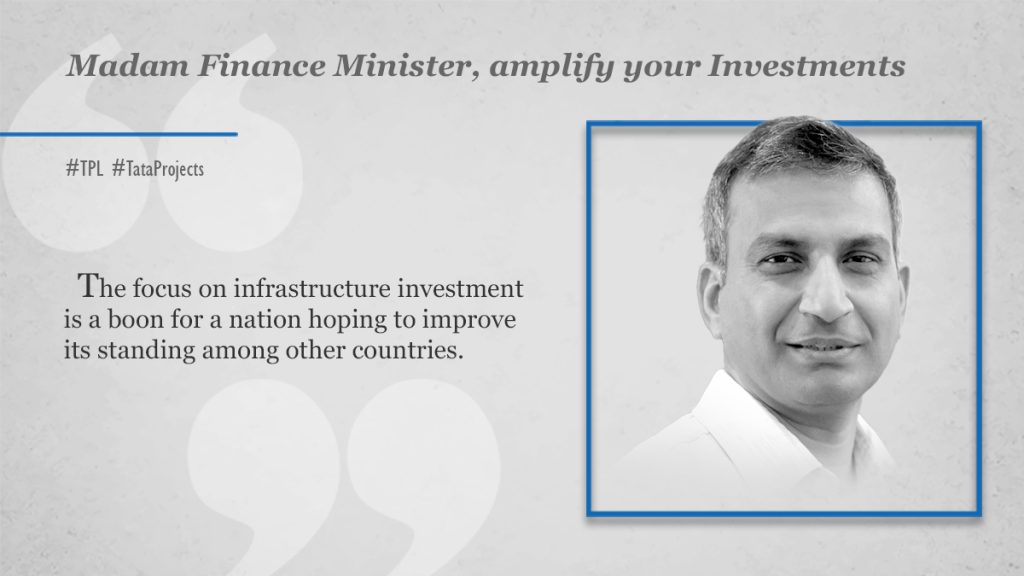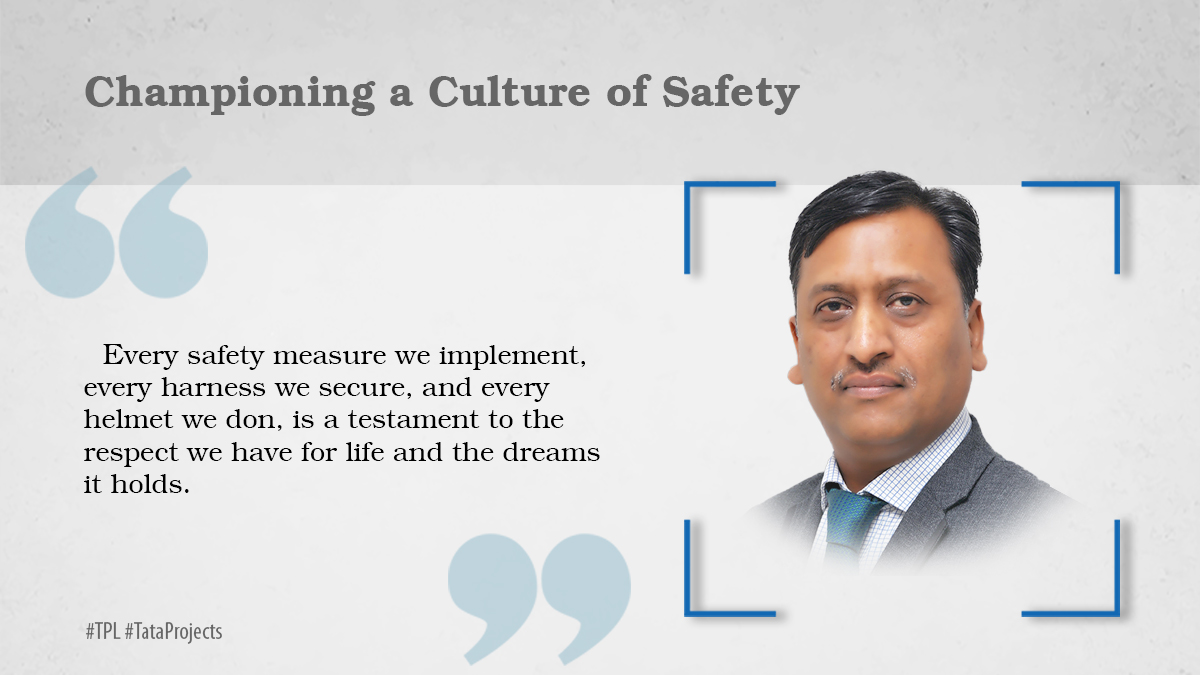The focus on infrastructure investment is a boon for a nation hoping to improve its standing among other countries.
During the Union budget for FY24, the Hon’ble Finance Minister increased the allocation for infrastructure to Rs 10 lakh crores. This was not only a continuation of an increase in absolute amount year on year, but also as its share in GDP to 3.4%. Hon’ble Finance Minister also offered 50 years interest-free loan to the States to help them do their bit towards quality infrastructure development.
The capital spending during FY24 has been broad-based and not just focussed on the traditional highways and railways sectors. According to the CMIE, private-sector investment in India has improved due to government initiatives. The CMIE data shows that the value of new investment proposals by the private sector nearly doubled from Rs 3 lakh crores in April-December 2022 to Rs 6 lakh crores in April-December 2023. From the capex cycle peak of GFCF being at 36% of GDP in FY08, the share of investment in the economy declined to a low of 27% in FY21. The GFCF is now expected to rise to a near-decade high of 30% in FY24 and improve further in the coming years. Strong tax collections and subdued social spending have allowed the Government to raise its capital expenditure by 3x over the past 5 years. The surge in infrastructure investment is part of a long-term strategy to promote Indian economic growth. The focus on infrastructure investment is a boon for a nation hoping to improve its standing among other countries and will prove invaluable when offering itself to global partners as an alternate manufacturing location.
Infrastructure investment by the Government, the real estate sector upswing, and improving private capital investment have collectively made India the fastest-growing large economy globally over the last 2 years. Overall capacity utilisation, as measured by the RBI, has inched up to 73.6% and is now above its 10-year average. Real estate and corporate capex, contributing ~75% of private capital investment, were subdued for the last several years and have now started picking up. The Government has approved PLI schemes worth Rs 2 lakh crores across 14 sectors: Semiconductors, automobiles, electronics manufacturing, and renewable energy being the key focus areas. Healthy corporate balance sheets, supply-side reforms like lower taxes on new manufacturing plants, Government incentives for various sectors, and a well-capitalised banking system are providing the tailwinds and should be significant growth drivers over the next few years.
While the playbook for capital investment is in place and should drive Indian economic growth, in the near term however, Indian GDP growth is expected to slow down in FY25 due to global slowdown, geopolitical uncertainties, and patchy monsoon. As Indian exports contribute ~20% of India’s GDP, the slowdown in other economies is bound to have an impact on our exports as well. Further, private consumption, which accounts for 57% of GDP, has also decelerated in recent quarters due to a decline in rural incomes. One could see the impact of these factors playing out in the Q3 earnings of IT and FMCG companies. Per se, Government policy support would be required to keep the Indian growth engine running at high speed.
The options for the Government to provide policy support however would be limited as budget consolidation on the top of lower economic growth takes its toll on the financials. From the fiscal deficit of 5.9% in FY24, the Government needs to hit its goal of 4.5% by FY26, a steep improvement metric for any Government. As such, unlike previous years, we don’t expect more than a 10-15% increase in infrastructure spending.
The funding available with the Government may be limited, but the demands are not. According to India Rating & Research, India’s per capita infrastructure investment at US$ 91 is far lower than the USA at US$ 938, China at US$ 622, and Brazil at US$ 256. India has set itself a target to be a developed country by 2047 with its GDP at US$ 30 trillion. This journey would require concomitant infrastructure capacity to be created.
Additionally, India has committed to net Zero by 2070. This would require serious investment, expected to be in the range of US$ 10 trillion. The hydrogen sector by itself is poised to attract considerable outlay, estimated at around Rs 1.5 lakh crores between fiscals 2024 and 2030. Since the entire world is on its journey to net Zero and the technology roadmap is still evolving, India has a unique opportunity to take a leadership role in developing/ testing new technologies and building a global scale in supplying green energy and green products to the world. This would require a multi-pronged mission approach by providing incentives and regulations to reduce carbon footprint, scaling up renewable energy sources, supporting innovation & and research in emerging technologies such as carbon capture/ storage/ negative emissions, and most importantly channelling large-scale investment into green hydrogen through mandates. The green investments would not only improve air quality and the health of our citizens but also provide energy security and create jobs.
When the finance minister presents the budget for FY25, one of the key objectives should be to amplify its limited spending budget. This should be done by increasing its role as an investment facilitator rather than direct investment. India has not benefited much from the growing weariness of investing in China and needs to tackle this issue urgently. The Government should enhance the PLI scheme for various sectors and introduce fresh manufacturing segments to make India a global hub of innovation and competitiveness. The Government should also enhance incentives and subsidies towards affordable housing projects to provide housing security. Now that India has come out of its twin balance sheet problem and there is improved risk appetite, it should divert more highway and railway projects towards the PPP model rather than EPC. Further, the Government should define green standards and mandate a transition to green construction in all infrastructure projects. The research and innovation towards net Zero should be incentivised by an enabling tax structure and the Government playing the role of partner in such investments.
Lastly, it is also time that the investment by the Government is complemented by that of Central PSUs. With the PSUs basket leading the current bull run, the aggregate market capitalisation of the PSUs has scaled past Rs 50 lakh crore for the first time ever. The stock prices of 23 PSUs rose over 2x in 2023. As of Dec 31, 2023, the market capitalisation of non-BFSI Central PSUs was more than Rs 22 lakh crores.
The Government has till date in FY24 raised close to Rs 10 thousand crores through divestment of its shareholding in the PSUs. The disinvestment target for the year is Rs 50 thousand crores. These disinvestments while helping the Government in plugging its fiscal deficit, necessitate a rethink. The market capitalisation of these PSUs could be further improved if the overhang of the owner stake was removed. Further, investors also traditionally prefer to invest in the company instead of participating in the secondary sale of shares, as primary capital creates further capacity for the company and improves prospects.
In essence, the Hon’ble Finance Minister should consider discontinuing the disinvestment and direct some of its infrastructure and net Zero investments through these PSUs. An equity raising from the stock market to the extent of 10% of non-BFSI market capitalisation, along with supporting debt leverage on the PSU balance sheet, would create an additional investment capacity of over Rs 11 lakh crores. This is more than the entire capital outlay by Central Government in FY24.
Himanshu Chaturvedi,
Chief Strategy and Growth Officer,
Tata Projects Limited
Simplify. Create.
























